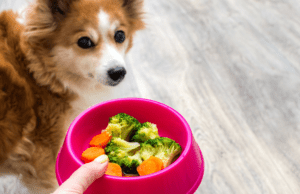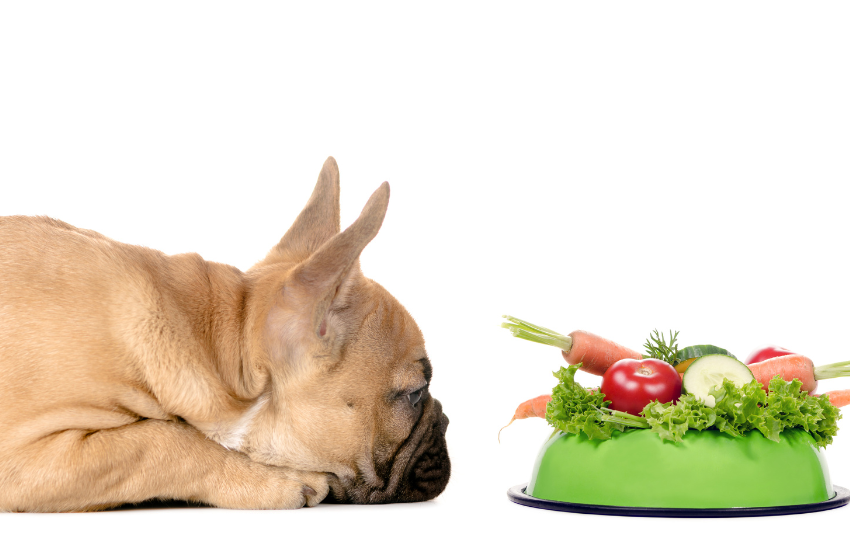We all want the best for our furry companions, and a well-balanced diet is vital to their overall health and well-being. While dogs are primarily carnivorous, incorporating nutrient-rich vegetables into their diet can provide them with essential vitamins, minerals, and fiber.
This guide will explore a wide range of safe and beneficial vegetables for dogs, ensuring their nutritional needs are met.
The Importance of Vegetables in a Dog’s Diet
Vegetables offer a variety of health benefits for dogs. They are a great source of essential nutrients, including vitamins A, C, and K, and minerals such as potassium and magnesium. Vegetables also contain dietary fiber, which aids in digestion and can help prevent constipation.

Additionally, certain vegetables possess antioxidants that can support immune function and reduce the risk of chronic diseases.
Dog-Friendly Vegetables
Here are some of the best vegetables for dogs to add to your pet’s diet:
Leafy greens: A powerhouse of nutrients
Leafy greens such as spinach, kale, and Swiss chard are rich in vitamins A, C, and K. These greens also provide iron and fiber, contributing to digestive health. However, oxalates present in some leafy greens should be considered, and moderation is vital to prevent potential issues.
Carrots: Crunchy delights for dental health
Carrots are a favorite among dogs for good reason. Packed with beta-carotene, carrots promote healthy vision and skin. Their crunchy texture also aids in dental health by reducing plaque and tartar buildup. Ensure that carrots are cut into bite-sized pieces to avoid choking.
Broccoli: Nutrient-dense florets
Broccoli is a nutrient-dense vegetable containing fiber, vitamins, and minerals. While it’s safe for dogs in moderation, excessive consumption can lead to digestive issues. Serve broccoli in small, cooked portions to enhance digestibility.
Sweet potatoes: Digestible and delicious
Sweet potatoes are a dog’s superfood, rich in beta-carotene, vitamins, and fiber. They are easily digestible and can be served boiled, baked, or mashed. Remove the skin and seeds before offering them to your dog.
Bell Peppers: A colorful crunch
Bell peppers are packed with vitamins A and C, making them a healthy addition to your dog’s diet. Remove the seeds and core, and offer slices in moderation. The crunchy texture provides a satisfying chew for your canine companion.
Zucchini: Low-calorie hydration boost
Zucchini is a low-calorie vegetable that adds moisture to your dog’s diet. Rich in vitamins and minerals, zucchini can be served raw or cooked. Remove the seeds and cut them into manageable pieces for your dog.
Cucumbers: Hydrating and cooling
Cucumbers are hydrating vegetables with a refreshing crunch. They are low in calories and can be served as a healthy snack. Remove the seeds and skin, and slice them into bite-sized pieces.
Cabbage: A digestive aid in moderation
While cabbage is rich in nutrients and fiber, it should be fed in moderation. Excessive consumption can lead to flatulence. Cooked and finely chopped cabbage can be added to your dog’s diet for a nutrient boost.
Pumpkin: Digestive support and more
Pumpkin is a versatile vegetable known for its digestive benefits. It’s rich in fiber and can help regulate bowel movements. Serve plain, cooked pumpkin in moderation, and avoid pumpkin pie filling, which may contain added sugars and spices.
Green Beans: Low-calorie nutrient boost
Green beans are a low-calorie vegetable rich in vitamins. They can be served cooked or raw, providing a healthy snack option. Cut them into appropriate sizes to prevent choking.
Considerations and Precautions

#1 Washing and peeling
Before preparing vegetables, it’s crucial to wash them thoroughly to remove any pesticides or contaminants. While some vegetables can be served with their skins, others may need peeling.
#2 Cooking methods for dogs
While some vegetables can be served raw, others benefit from cooking to enhance their digestibility and nutrient absorption. Standard cooking methods include:
- Steaming: Steaming vegetables retain nutritional value while making them softer and more palatable for dogs. This method is suitable for broccoli, green beans, and carrots.
- Boiling: Boiling vegetables is a simple method that softens them. For instance, sweet potatoes and pumpkin can be boiled and mashed for easy consumption.
- Baking or Roasting: This method works well for vegetables like sweet potatoes. Bake or roast them until they are soft and easily mashable.
- Blanching: Blanching involves briefly boiling vegetables and then quickly cooling them. This method is suitable for vegetables like green beans.
#3 Avoid harmful additives
When preparing vegetables, avoiding harmful additives such as salt, butter, or seasonings is crucial. Dogs have a sensitive digestive system, and these additions can cause digestive issues or even be toxic. Serve vegetables plain or with minimal cooking oils if necessary.
#4 Creative ways to serve vegetables
Making vegetables enjoyable for your dog can involve some creativity. Consider incorporating them into your dog’s meals in the following ways:
- Mashed: Mix cooked vegetables like sweet potatoes or pumpkins into your dog’s regular food.
- Frozen Treats: Freeze small pieces of vegetables like carrots or green beans for a refreshing and crunchy treat.
- Homemade Dog Biscuits: Incorporate finely grated vegetables into homemade dog biscuits for added flavor and nutrition.
- Vegetable mix-ins: Chop vegetables finely and mix them into your dog’s regular kibble for a nutrient boost.
#5 Monitoring your dog’s response
Introducing new vegetables into your dog’s diet should be done gradually. Monitor your dog’s response to the vegetables, looking for signs of digestive upset or allergies.
If you notice any adverse reactions, consult with your veterinarian. With their help, they can go over your pet’s diet in detail, look at any symptoms you are seeing, and create a custom nutrition plan to suit your animal and get them on a healthier track.
Doobert’s Mission to Harvesting Pet Health
Preparing vegetables for dogs is an enriching journey that involves careful selection. By incorporating nutrient-rich vegetables into your dog’s diet, you contribute to their overall health and well-being. Remember to gradually introduce new vegetables, monitor for adverse reactions, and practice portion control.
Doobert’s mission extends beyond offering information. It’s about empowering pet owners to make informed choices that positively impact the lives of their furry friends. Let us embark on this flavorful adventure, ensuring every bite celebrates health, happiness, and the bond we share with our beloved furry friends!
Learn more about pet resources! Visit us at https://doobert.com













